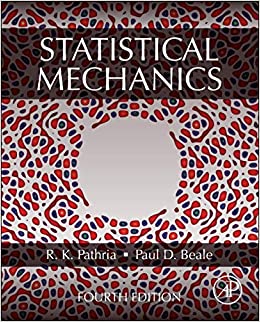Consider a composite system (A B) composed of two noninteracting subsystems (A) and (B), with the principle
Question:
Consider a composite system \(A B\) composed of two noninteracting subsystems \(A\) and \(B\), with the principle of independence of noninteracting subsystems requiring that \(\hat{ho}_{A B}=\hat{ho}_{A} \hat{ho}_{B}\). Use this to show that the equilibrium density matrix must be of the form \(\hat{ho}=e^{-\beta \hat{H}} / \operatorname{Tr} e^{-\beta \hat{H}}\). Further show that if the spectrum of the Hamiltonian is unbounded above, then we must require that \(\beta>0\). On the other hand, if the spectrum of the Hamiltonian is bounded, \(\beta\) may be positive, negative, or zero, and can exhibit negative temperatures.
Fantastic news! We've Found the answer you've been seeking!
Step by Step Answer:
Related Book For 

Question Posted:





